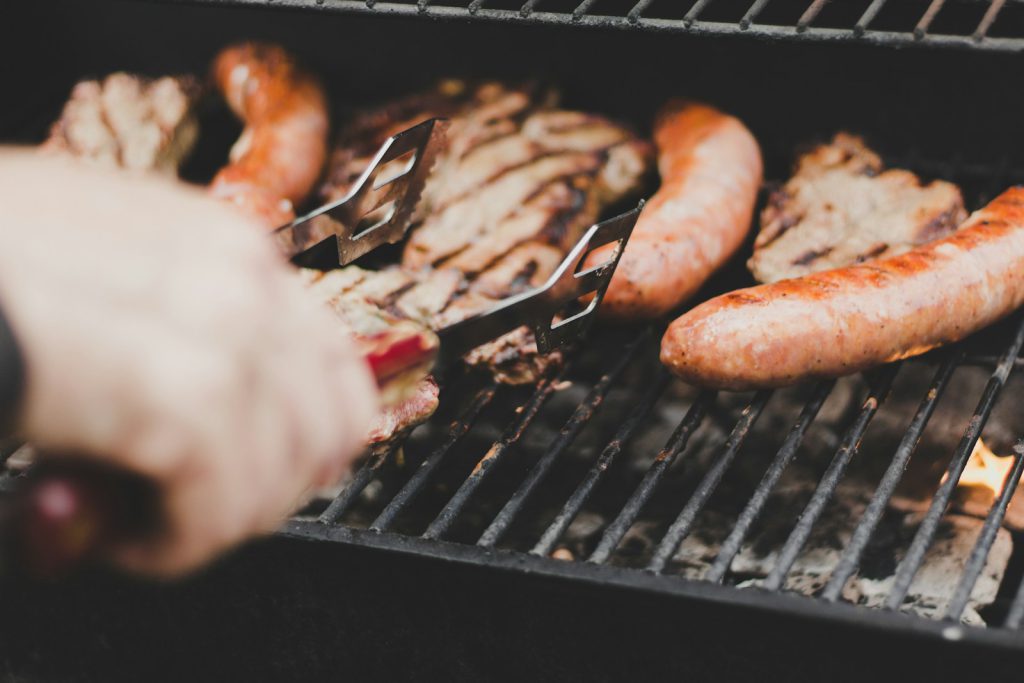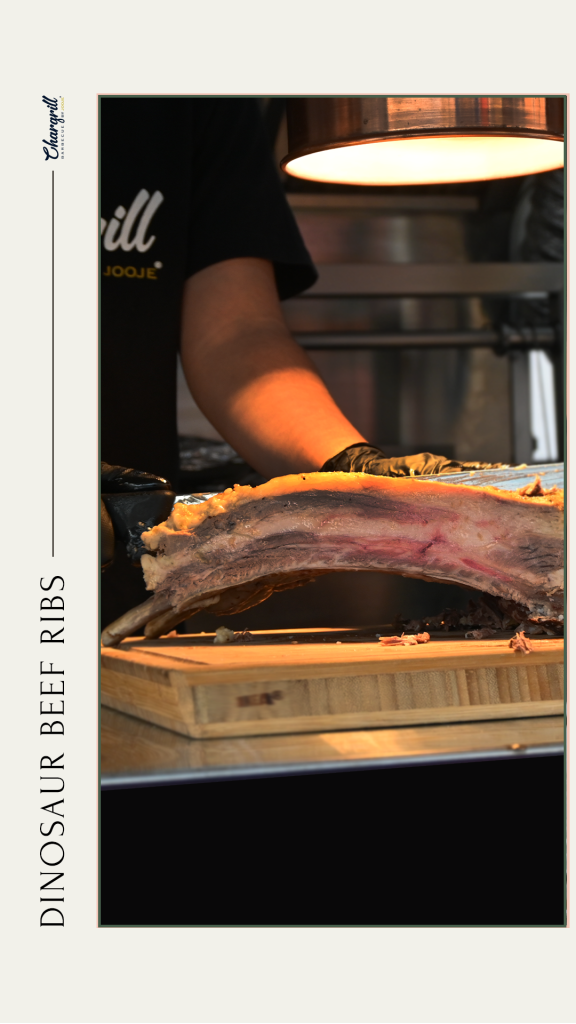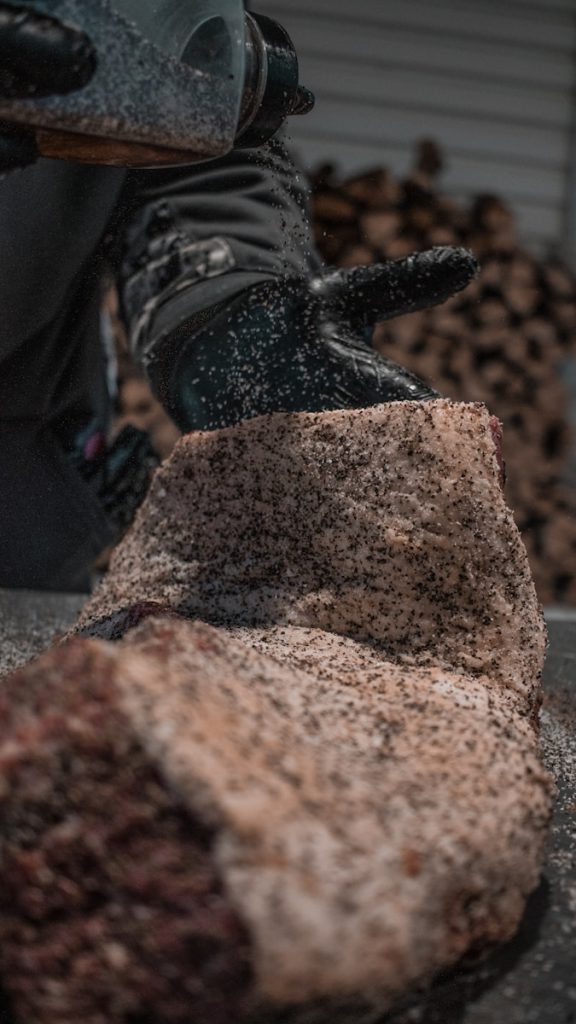Interactive BBQ catering on the coast has become a popular trend for events and gatherings, offering a unique and engaging way to enjoy food and socialize. This style of catering allows guests to participate in the cooking process, creating a fun and memorable experience. In this article, we will explore the various aspects of interactive BBQ catering, from its benefits and setup to menu ideas and examples of successful events.
The Rise of Interactive BBQ Catering
Interactive BBQ catering has emerged as a fresh and innovative approach to event catering. Unlike traditional catering, where food is prepared and served by professionals, interactive BBQ allows guests to be involved in the cooking process. This interactive element not only entertains but also fosters a sense of community and collaboration among guests.
Benefits of Interactive BBQ Catering
- Engagement: Guests are more engaged and entertained when they are part of the cooking process.
- Customization: Allows for personalized meal options, catering to various dietary preferences and restrictions.
- Memorable Experience: Creates lasting memories as guests participate in a unique dining experience.
- Cost-Effective: Can be more affordable than traditional catering due to the interactive nature and reduced need for staff.
Setting Up an Interactive BBQ Catering Event
Proper planning and preparation are the cornerstones of a successful interactive BBQ catering event. Here’s a detailed guide to ensure your event runs smoothly:
Venue Selection
- Outdoor Space: Choose a location that supports outdoor cooking, such as a backyard, park, or event venue with outdoor facilities. Ensure there’s ample space for cooking stations, seating, and guest movement.
- Accessibility: Make sure the venue is easily accessible for guests and has necessary amenities like restrooms and parking.
- Permits: Check if any permits are required for outdoor cooking or large gatherings at the chosen venue.
Equipment
- BBQ Grills: Depending on the size of your event, you may need several grills. Consider a mix of gas and charcoal grills to accommodate different cooking styles and preferences.
- Utensils and Tools: Ensure you have a sufficient supply of tongs, spatulas, grill brushes, skewers, and meat thermometers.
- Safety Equipment: Have fire extinguishers, first aid kits, and gloves on hand to ensure safety during the event.
- Tables and Chairs: Provide enough tables and chairs for cooking stations and seating areas. Consider renting additional furniture if necessary.

Staffing
- Event Coordinator: Hire an event coordinator to oversee the planning and execution of the event.
- Professional Chefs: While the event is interactive, having experienced chefs to guide guests and ensure food safety is crucial.
- Support Staff: Include staff to assist with setup, cleanup, and guest services.
Weather Contingencies
- Tents and Canopies: Rent tents or canopies to provide shelter in case of rain or excessive sun.
- Indoor Backup: If possible, have an indoor space available as a backup location.
- Heaters and Fans: Depending on the season, have portable heaters or fans available to keep guests comfortable.
Designing the Layout
Creating an inviting and functional layout enhances the interactive experience and ensures smooth flow throughout the event.
Cooking Stations
- Multiple Stations: Set up several cooking stations to avoid congestion and encourage interaction. Each station can feature different types of food, such as burgers, kebabs, or seafood.
- Thematic Setup: Decorate each station according to the type of cuisine being prepared. Use signs to indicate the station’s specialty.
- Safety and Accessibility: Ensure all cooking stations are safely spaced apart and easily accessible to guests.
Seating Arrangements
- Comfortable Seating: Provide comfortable seating areas where guests can relax and enjoy their meals. Consider using a mix of tables and lounge areas with cushions and blankets.
- Communal Tables: Set up long, communal tables to encourage socializing and a sense of community.
- Shade and Shelter: Ensure seating areas are shaded or sheltered to protect guests from the elements.
Decoration
- Theme Consistency: Choose decorations that enhance the BBQ theme. Rustic tables, fairy lights, and greenery can create a warm and inviting atmosphere.
- Signage: Use clear and attractive signage to guide guests to different stations and seating areas.
- Centrepieces: Incorporate centrepieces on tables, such as potted plants, lanterns, or BBQ-themed decor.

Logistics and Operations
Smooth logistics and operations are essential to ensure the event runs without a hitch.
Food and Beverage Supply
- Inventory Management: Keep a detailed inventory of all food and beverage supplies. Ensure there’s enough to accommodate all guests with some margin for unexpected attendees.
- Storage: Use coolers and refrigerators to keep perishable items fresh until they are ready to be cooked.
- Replenishment: Have a plan for replenishing supplies during the event, especially for popular items.
Waste Management
- Trash and Recycling: Set up clearly marked trash and recycling bins throughout the venue. Ensure they are emptied regularly.
- Compostable Items: Consider using compostable plates, cups, and utensils to reduce waste.
Guest Experience
- Welcome Area: Set up a welcome area where guests can check-in, receive information about the event, and collect any necessary items like aprons or utensils.
- Entertainment: Provide entertainment such as live music, games, or cooking demonstrations to keep guests engaged.
- Guest Assistance: Have staff available to assist guests with any questions or needs throughout the event.

Example Layout Plan
Diagram
Imagine a rectangular venue space divided into distinct areas:
- Entrance and Welcome Area: At the front, where guests check-in.
- Cooking Stations: Spread out evenly along one side, each with a specific theme or type of food.
- Seating Areas: Centrally located, with a mix of communal tables and lounge seating.
- Beverage Station: On the opposite side from the cooking stations, offering drinks and refreshments.
- Entertainment Area: Near the seating, for easy access while dining.
Detailed Plan
- Entrance and Welcome Area: Greeters welcome guests, provide event information, and direct them to various stations.
- Cooking Stations: Each station has a chef or staff member to guide guests. Themes could include Classic BBQ, Seafood Grill, Exotic Kebabs, and DIY Skewers.
- Seating Areas: Long communal tables encourage socializing. Smaller lounge areas offer a relaxed dining experience.
- Beverage Station: Serve a variety of drinks, including craft beers, cocktails, and non-alcoholic options.
- Entertainment Area: Live band or DJ, with space for cooking demonstrations and games.
By meticulously planning and preparing for your interactive BBQ catering event, you can create an engaging, enjoyable, and memorable experience for all your guests.
Menu Ideas for Interactive BBQ Catering
Classic BBQ Dishes
Interactive BBQ catering thrives on the familiarity and satisfaction of classic BBQ dishes. These staples not only please a wide range of palates but also provide a solid foundation for a successful event. Here are some ideas:
- Burgers and Hotdogs: Offer a variety of toppings and sauces for guests to customise their own creations. Provide options such as lettuce, tomatoes, pickles, onions, cheese, mustard, ketchup, BBQ sauce, and spicy relish.
- Steak and Ribs: Serve different cuts of steak (ribeye, sirloin, T-bone) and ribs with a selection of marinades and rubs. Guests can choose from seasnal BBQ, garlic and herb, spicy chipotle, or sweet honey glaze.
- Chicken Wings and Drumsticks: Marinate in various sauces like buffalo, teriyaki, BBQ, and honey mustard. Allow guests to grill their wings and drumsticks to their preferred level of crispiness.
- Vegetarian Options: Include veggie burgers, grilled vegetables (such as bell peppers, zucchini, and portobello mushrooms), and tofu skewers. Provide different marinades and seasoning options for a personalized touch.
Unique and Exotic Choices
Adding unique and exotic choices to the menu can elevate the interactive BBQ catering experience. These options introduce new flavours and excitement:
- Kebabs: Offer a range of meats, seafood, and vegetables on skewers. Guests can choose from lamb, chicken, beef, shrimp, and an assortment of vegetables like cherry tomatoes, onions, and bell peppers. Provide different seasoning blends and marinades for variety.
- Seafood: Incorporate grilled prawns, scallops, fish fillets, and lobster tails. Create a DIY seafood station where guests can select their seafood and seasonings, then grill to perfection.
- Fusion Dishes: Combine BBQ with other cuisines, such as Korean BBQ with bulgogi marinated beef, Mexican-style grilled street corn, or Mediterranean-style grilled lamb with tzatziki sauce.
- Gourmet Sausages: Offer a selection of artisanal sausages, including options like bratwurst, chorizo, and merguez. Provide different condiments and toppings for guests to experiment with.
Sides and Salads
No BBQ is complete without a variety of sides and salads. These accompaniments enhance the main dishes and add balance to the meal:
- Coleslaw: A classic side that pairs well with BBQ. Offer different versions, such as traditional, vinegar-based, and spicy coleslaw.
- Potato Salad: Serve multiple versions, including classic potato salad, mustard-based, and loaded with bacon, cheese, and green onions.
- Grilled Corn: A favourite at BBQs, provide corn on the cob with a variety of seasonings and toppings like butter, lime, chili powder, and parmesan cheese.
- Macaroni and Cheese: A creamy and comforting side that can be served plain or with added ingredients like bacon, jalapeños, or truffle oil.
- Bean Salad: A refreshing option made with a mix of beans, diced vegetables, and a tangy vinaigrette.
- Caprese Salad: A simple yet delicious salad with fresh tomatoes, mozzarella, basil, olive oil, and balsamic glaze.
- Fruit Salad: A light and refreshing option, perfect for balancing the richness of BBQ dishes. Include seasonal fruits and a touch of mint.

Desserts
Finish the meal with interactive and delicious desserts that guests can enjoy making:
- S’mores Station: Provide graham crackers, chocolate bars, and marshmallows. Guests can toast their marshmallows over the grill and assemble their own s’mores.
- Grilled Fruit: Offer a selection of fruits like pineapple, peaches, and bananas for grilling. Serve with a drizzle of honey or a sprinkle of cinnamon.
- Ice Cream Bar: Set up an ice cream station with various flavours and toppings such as sprinkles, chocolate sauce, caramel, nuts, and fresh fruit.
- Fruit Skewers: Pre-assemble skewers with a variety of fruits, and let guests grill them lightly. Serve with a side of yogurt dip or chocolate fondue.
Beverage Pairings
Complement the BBQ menu with a selection of beverages:
- Craft Beers: Offer a range of local craft beers to pair with the BBQ dishes.
- Cocktails: Create a signature BBQ cocktail, such as a smoky margarita or a bourbon lemonade.
- Non-Alcoholic Options: Provide refreshing non-alcoholic drinks like homemade lemonade, iced tea, and flavoured water with fruit infusions.
- Wine: Choose a selection of red and white wines that pair well with BBQ, such as a robust Zinfandel or a crisp Sauvignon Blanc.
Enhancing the Interactive Experience
Cooking Demonstrations
Incorporate cooking demonstrations by professional chefs to entertain and educate guests. These demonstrations can include tips on grilling techniques, seasoning, and presentation.
Interactive Stations
Set up interactive stations where guests can participate in different aspects of meal preparation, such as:
- Marinade Station: Guests can create their own marinades using a selection of herbs, spices, and sauces.
- DIY Skewer Station: Provide ingredients for guests to assemble their own skewers, choosing from various meats, seafood, and vegetables.
- S’mores Station: A dessert station where guests can toast marshmallows and assemble their own s’mores.

Examples of Successful Interactive BBQ Events
Corporate Events
Interactive BBQ catering is an excellent choice for corporate events, fostering team building and networking. Companies have successfully used this catering style for employee appreciation days, team-building exercises, and client entertainment.
Weddings
Couples looking for a unique and relaxed wedding reception option have turned to interactive BBQ catering. This style of catering adds a fun element to the celebration and allows guests to mingle and interact more freely.
Festivals and Public Events
Interactive BBQ catering has also become popular at festivals and public events. These events often feature large BBQ setups where attendees can participate in cooking and enjoy a communal dining experience.
Case Study: A Successful Interactive BBQ Event
Event Overview
One notable example of a successful interactive BBQ event is the annual “Grill & Chill” festival in Sydney. This event attracts thousands of attendees who come to enjoy live music, cooking demonstrations, and interactive BBQ stations.
Execution
The event is meticulously planned, with multiple cooking stations set up around the venue. Professional chefs lead cooking demonstrations, while guests participate in hands-on cooking activities. The layout includes ample seating and themed decorations, creating a festive atmosphere.
Outcome
The “Grill & Chill” festival has received rave reviews for its engaging and interactive approach to BBQ catering. Attendees appreciate the opportunity to learn new cooking skills, enjoy delicious food, and connect with others in a relaxed setting.
Conclusion
Interactive BBQ catering offers a unique and engaging way to host events, providing guests with a memorable and enjoyable experience. By involving guests in the cooking process, this catering style fosters interaction, customization, and fun. Whether for corporate events, weddings, or public festivals, interactive BBQ catering is a versatile and appealing option that is sure to leave a lasting impression.



